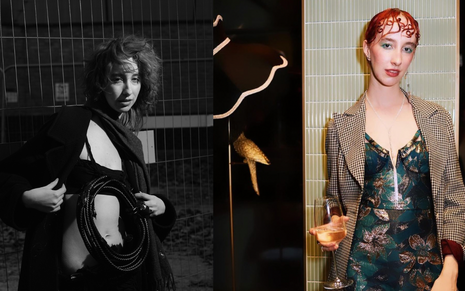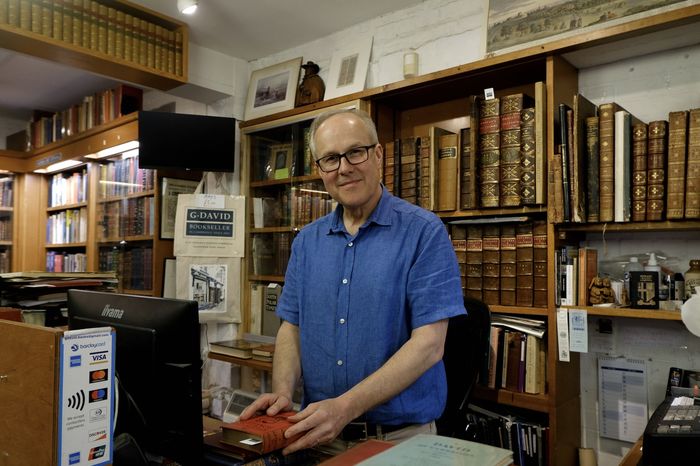From Castle Mound to Fashion Week: Lily Maguire on being a ‘creative’
Somdatta Chakraborty talks to Lily Maguire on her experiences in fashion industry after graduating

It’s warm in my room, and the yellow sunlight makes it feel warmer as I set up my laptop to call Lily. She’s just returned from her whirlwind weekend trip to Paris Fashion Week, where she visited trade shows.
If you ask Lily what she does, she’ll tell you that she’s a “creative” – but what exactly is a “creative”? “With confidence, you can carry yourself far,” she replies. “Anybody should be able to have the confidence to say that they’re a ‘creative’”. Fashion fanatic, founder of student-run publication DISRUPTION, and ex-Varsity Fashion Editor, Lily has now formally joined the fashion field.
“You feel like you’ve deceived people. I mean, these photos are made by a bunch of 20 year-olds using sunset lamps”
I ask for the story behind DISRUPTION, and she laughingly tells me that it began with her directing shoots. Upon starting university, she was forced to live at home due to pandemic restrictions, and felt that all she could do was study, since there weren’t many social events. She craved creativity: “I just wanted to do something that would make me feel the way I used to.” So she started writing for Varsity, and was quickly promoted to fashion editor. Pulling together a group of people, she directed her first editorial atop Castle Mound, a day that she later described as being “one of the best moments of a difficult year”.
Then she took over Vulture, and continued directing shoots and short films. Her favourite part? Most people in her team were unrelated to the fashion industry: “You feel like you’ve deceived people. I mean, these photos are made by a bunch of 20 year-olds using sunset lamps.” Despite her love for Varsity, she tells me how she required a new “radically creative direction,” so when she failed to clinch the Editor-in-Chief role, it seemed a sign: “I’d been there a while, and wanted to do something less traditional. Creating visuals was what I loved.” Then came DISRUPTION.
With a focus on representation in the fashion industry in mind, she explains how the core of DISRUPTION came from moments she’d shared with other students. “One shoot, we recreated pre-Raphaelite paintings. We wanted to disrupt the white cisgendered feminine ideal. We were full of ideas, in costume in Robinson chapel at 5am. The sun was rising and Solange was playing – it was powerful”. DISRUPTION was a collaborative mechanism to keep producing moments like that – moments “about representation and connection and empowerment”.
“I’m not freelancing by choice. I’m freelancing because I’ve applied to 250 entry-level jobs in the creative industry, and have had two interviews”
Post-graduation, Lily’s focus has been on her career, but she hopes to acquire the funding to grow DISRUPTION. She’s brutally honest about the job market: “I’m not freelancing by choice. I’m freelancing because I’ve applied to 250 entry-level jobs in the creative industry, and have had two interviews.” The fashion industry is “so largely informed by elitism and nepotism,” she tells me, that she’s pitted against older graduates backed by years of industry experience, all running for the same entry-level assistant position – steep competition. When discussing the difficulties of entering the industry, Lily also noted that “there are so many barriers to succeeding as a working class creative.” She also described how much of her work is unpaid, too.
I’m surprised to hear that most of her projects come online: “The opportunities are amazing; I haven’t booked a single shoot through anything other than social media.” But she confesses that it’s about feigning self-confidence; being in her twenties, in the creative industry, “you always feel like a phoney”. In Lily’s field, it feels like making things up in every aspect of life – stability is a rarity. But she flips this on its head: “I think you can turn that uncertainty into an advantage. Overreach with how you’re selling yourself; you might just exceed your expectations.” That’s the key, she tells me: gaining real confidence by doing what you didn’t think you could; it’s a game of risks. “When I started freelancing, I didn’t know what the word meant. And I still don’t. I put ‘Creative director and stylist’ in my bio and made a free website. I mass DM-ed photographers, asking if they needed styling assistance. I started getting bookings as a stylist, and building relationships with PR companies.” Being a creative is all about uncertainty – but, in Lily’s words, “you just have to run with that uncertainty”.
From Castle Mound to Fashion Week, Lily admits that the imposter syndrome feeling that began as a Fresher still follows her around: “I felt like Anna Delvey.” Getting invited to such big shows “felt like being a scammer, around all these way more experienced individuals”. On a whim, she got accredited by the British Fashion Council as a journalist – suddenly invites from PR companies came rolling in. She divulges that Fashion Weeks are “always, always late. And everyone’s always running. This season was fun. Particularly Sinead Gorey, who did a runway in ‘Heaven’ – a London nightclub. The show was one of my favourites.”
Her career path has been unexpected, she admits. The university environment allowed her to unlock parts of herself that she hadn’t been able to access during school life: “It was queerness, it was neurodivergence, it was all these things that made me realise I thought differently.” She “felt free to explore all these other things that I couldn’t when I was younger, things that have vaguely popped up in my past like creativity. And I found out that it was a huge part of me – a massive, massive part of who I am.”
 Comment / Plastic pubs: the problem with Cambridge alehouses 5 January 2026
Comment / Plastic pubs: the problem with Cambridge alehouses 5 January 2026 News / Cambridge academics stand out in King’s 2026 Honours List2 January 2026
News / Cambridge academics stand out in King’s 2026 Honours List2 January 2026 News / Cambridge businesses concerned infrastructure delays will hurt growth5 January 2026
News / Cambridge businesses concerned infrastructure delays will hurt growth5 January 2026 News / AstraZeneca sues for £32 million over faulty construction at Cambridge Campus31 December 2025
News / AstraZeneca sues for £32 million over faulty construction at Cambridge Campus31 December 2025 Interviews / You don’t need to peak at Cambridge, says Robin Harding31 December 2025
Interviews / You don’t need to peak at Cambridge, says Robin Harding31 December 2025










